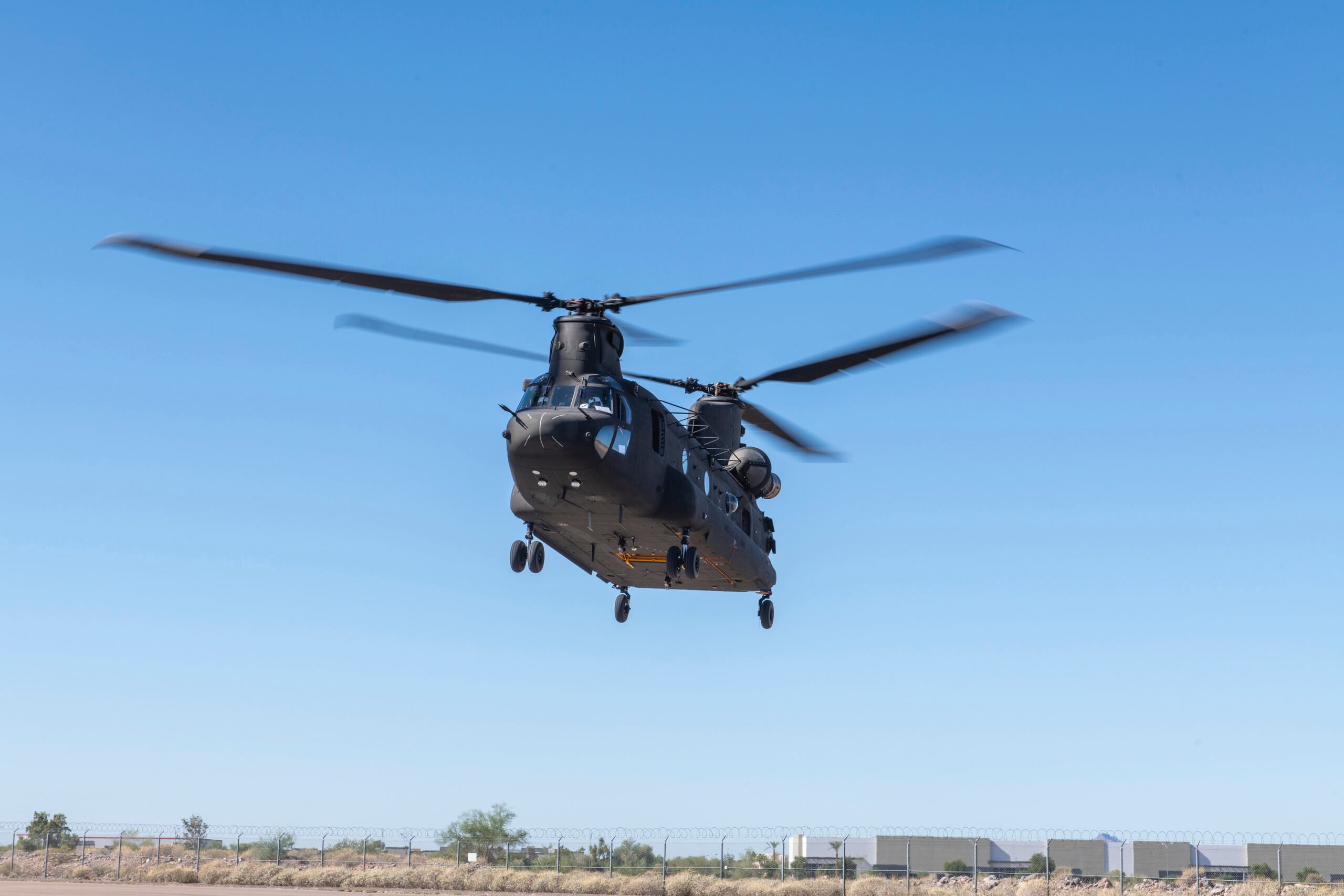
H-47 Chinook Block II. Photo Courtesy of Boeing.
Last month, we celebrated the 60th anniversary of the first flight of the Boeing-built Chinook — a monumental achievement for any aircraft.
During 60 years of flight, the Chinook has logged millions of flight hours on thousands of global missions flown by generations of the best pilots in the world. It’s made countless life-saving missions possible, both on the battlefield and supporting humanitarian operations. It’s resulted in unmatched reliability and versatility for the 19 countries who are part of Team Chinook. All of this was made possible because of one remarkable aircraft.
And it’s just getting started.
The next-generation of the aircraft, dubbed the Block II Chinook, is a technological marvel that not even Frank Piasecki — inventor of original tandem rotor helicopter design — could foresee.
More than 25,000 pounds of lift? No way. Digital flight controls that make precise maneuvers as easy as the click of a button? You’re crazy.
Just last month, we signed the first production contract for the U.S. Army’s CH-47F Block II Chinook. This cutting-edge aircraft continues the evolution of the iconic Chinook and delivers modernized capabilities to meet the Army’s evolving heavy-lift needs. The Block II Chinook represents the beginning of the future of Army Aviation, providing a growth engine for the multi-domain environment — now and in the future.
Heavier Lift Now
Heavy lift is not only about how much you can lift, it’s about what you can do with that lift. Block II Chinook provides additional operational relevance today — not 10 years from now. That will enable the Army to continue to operate as the globally dominate land power. As the Army’s top uniformed official, Chief of Staff Gen. James McConville, said in May, the Army “need[s] to get that aircraft to Block II.”
“We already know that the Chinook brings the heavy-lift muscle to the battlefield,” said Andy Builta, Boeing vice president and H-47 program manager. “But it’s also a great connector for the Army across domains and in harsh environments. It provides the edge and critical support needed by ground commanders to allocate people and resources when and where they are needed.”
Greater Power Later
As the Army shifts its focus to the Indo-Pacific region and its need for additional Future Vertical Lift platforms, Chinook Block II enables that growth.
On one hand, the Chinook already excels in that region and will complement and amplify the benefits of any additional airframe the Army acquires. It will increase readiness for the most challenging missions. That’s what’s called a “known-known” in our world. On the other hand, the long-term savings of the Block II program means more resources for the Army to execute its Future Long-Range Assault Aircraft and Future Attack Reconnaissance Aircraft initiatives.
Moreover, we’re testing even more capabilities to continue the evolution of the Chinook platform. Through a recent research and development agreement with the Army, we successfully tested a more powerful engine on a Chinook, for when the Army needs even more power in the future. Additional mission systems testing is underway to reduce pilot workload and enable semi-autonomous flight.
By leveraging digital expertise from across Boeing Defense, Space & Security and Boeing Commercial Airlines, we’re also digitally transforming rotorcraft. Our digital engineering capabilities have already proved transformational in allowing us to make faster improvements to those mission systems at the speed of relevancy.
The Bottom Line
The Army has made a tremendous investment in the Chinook Block II program. Keeping it fully funded is a win-win-win for the Army, the industrial base and the troops whose lives depend on the proven Chinook program. It’s the trusted Chinook that has carried the load for the Army for 60 years and counting — transformed to offer MORE in support of Multi-Domain Operations today and tomorrow.





















